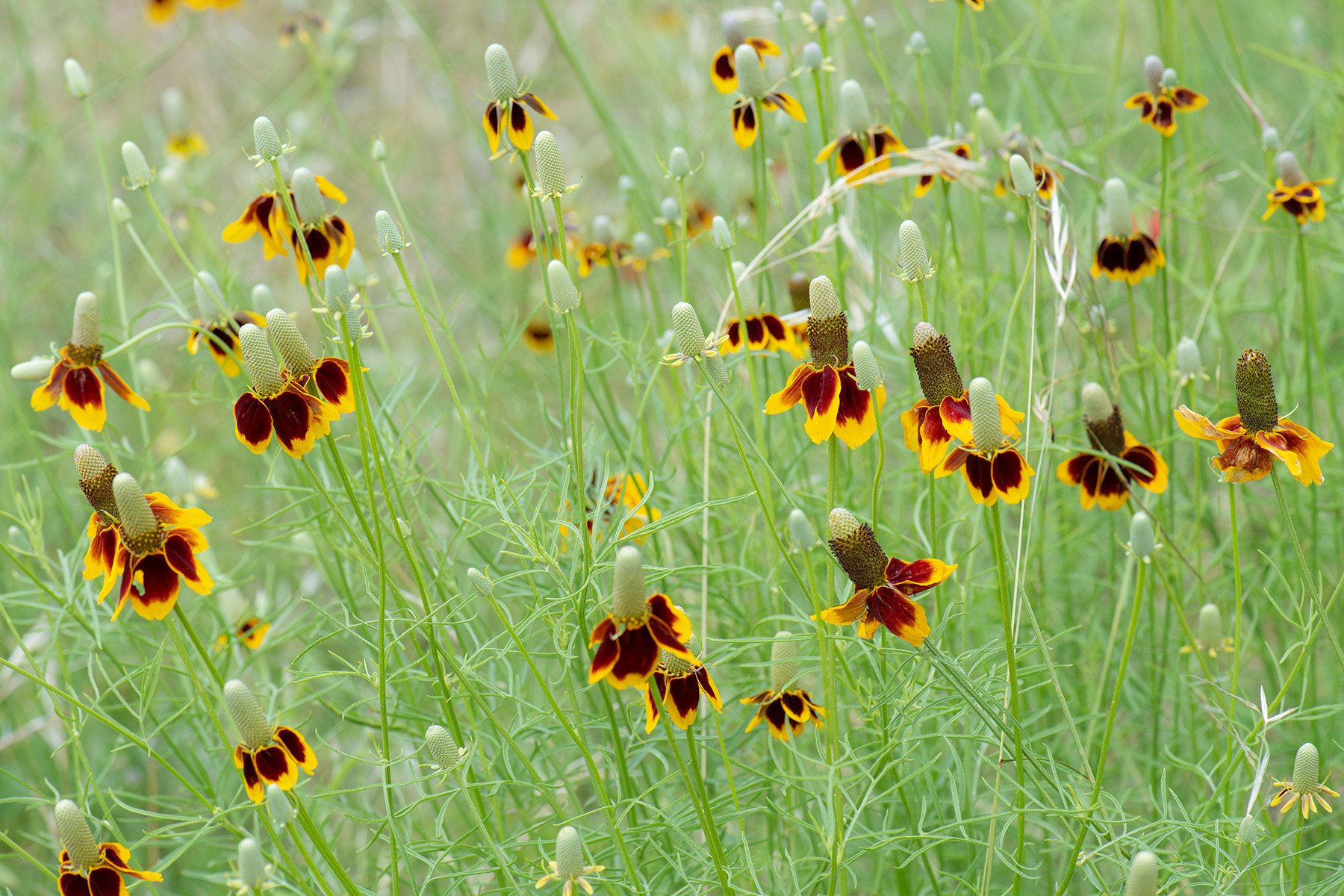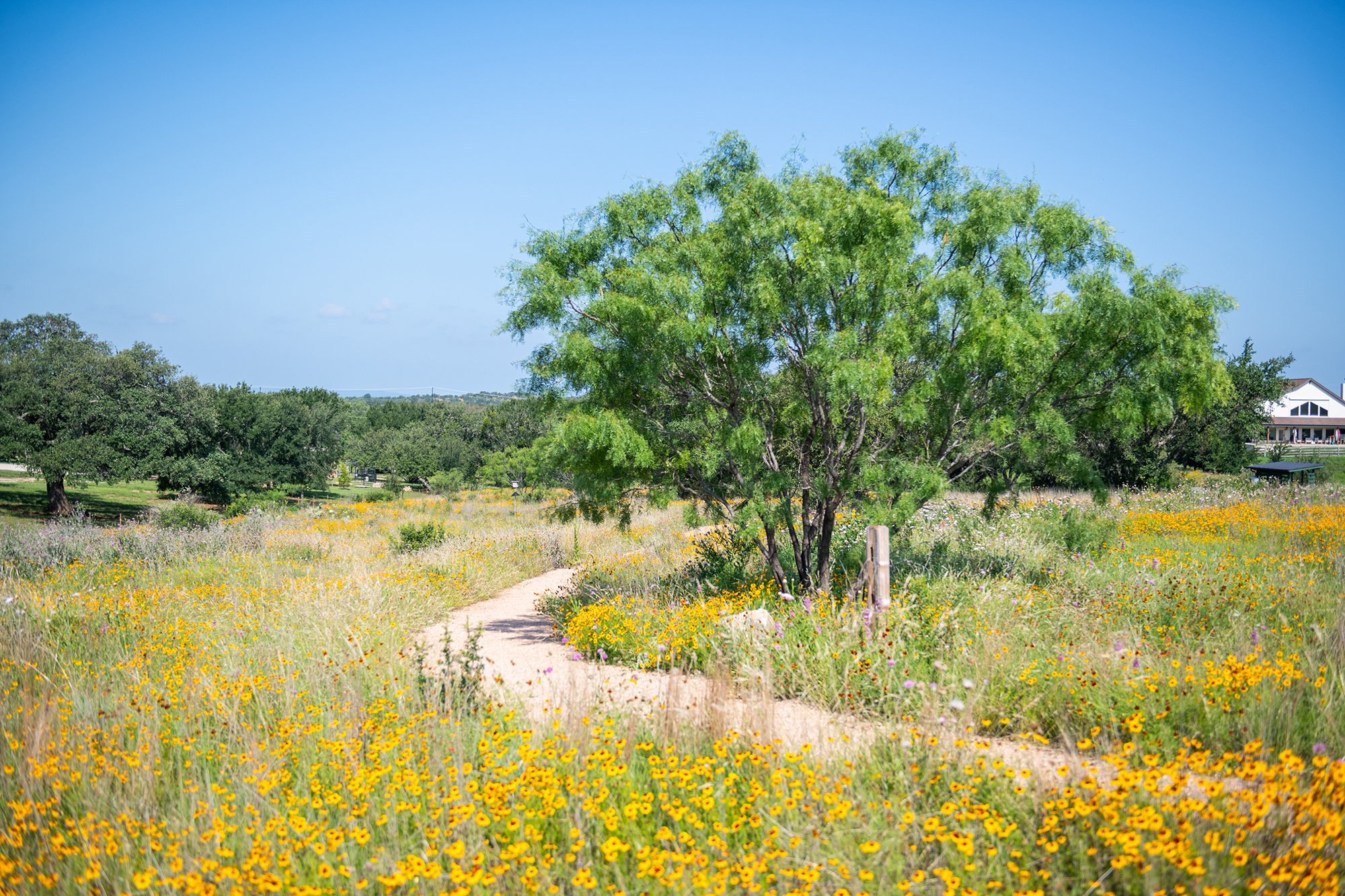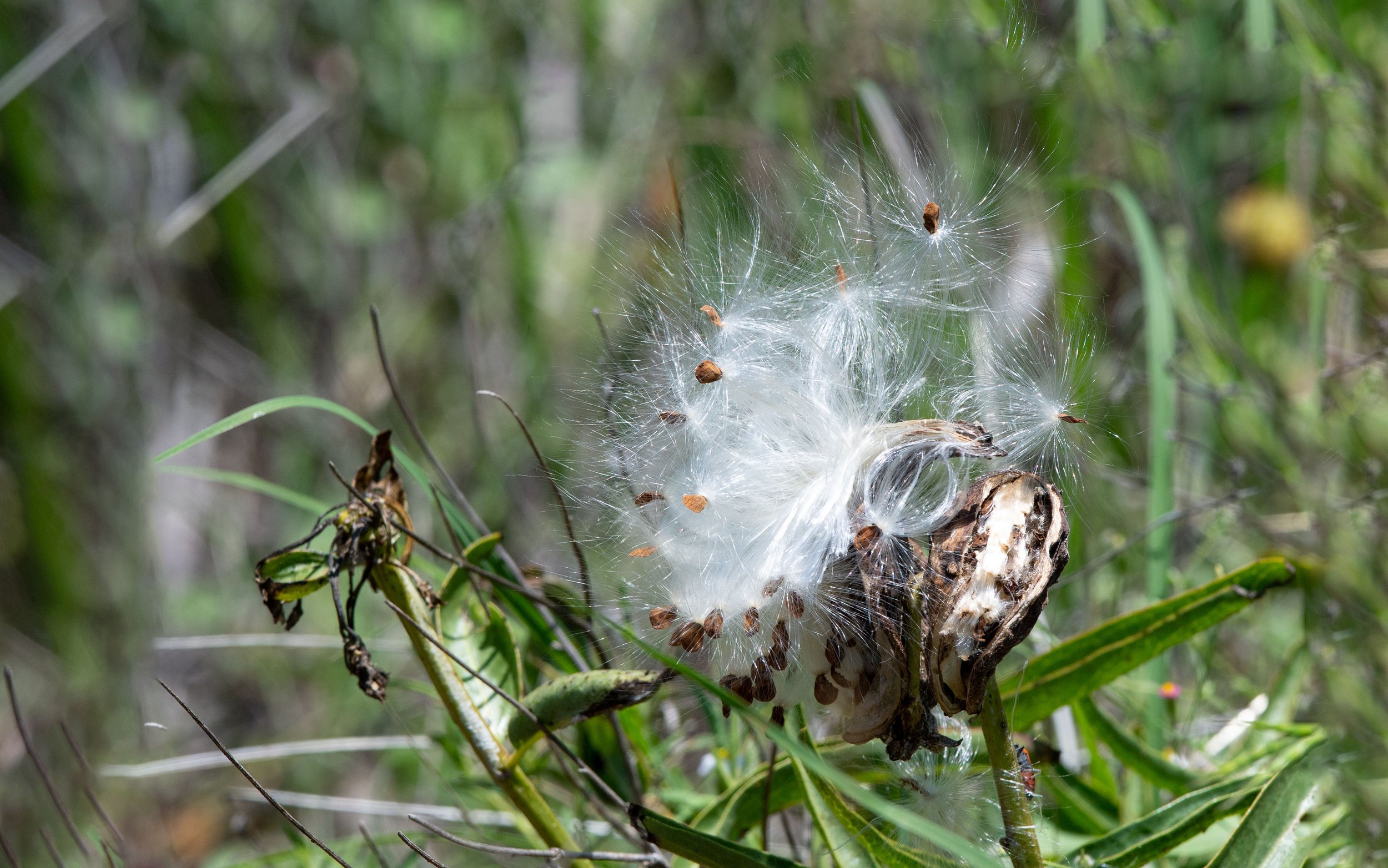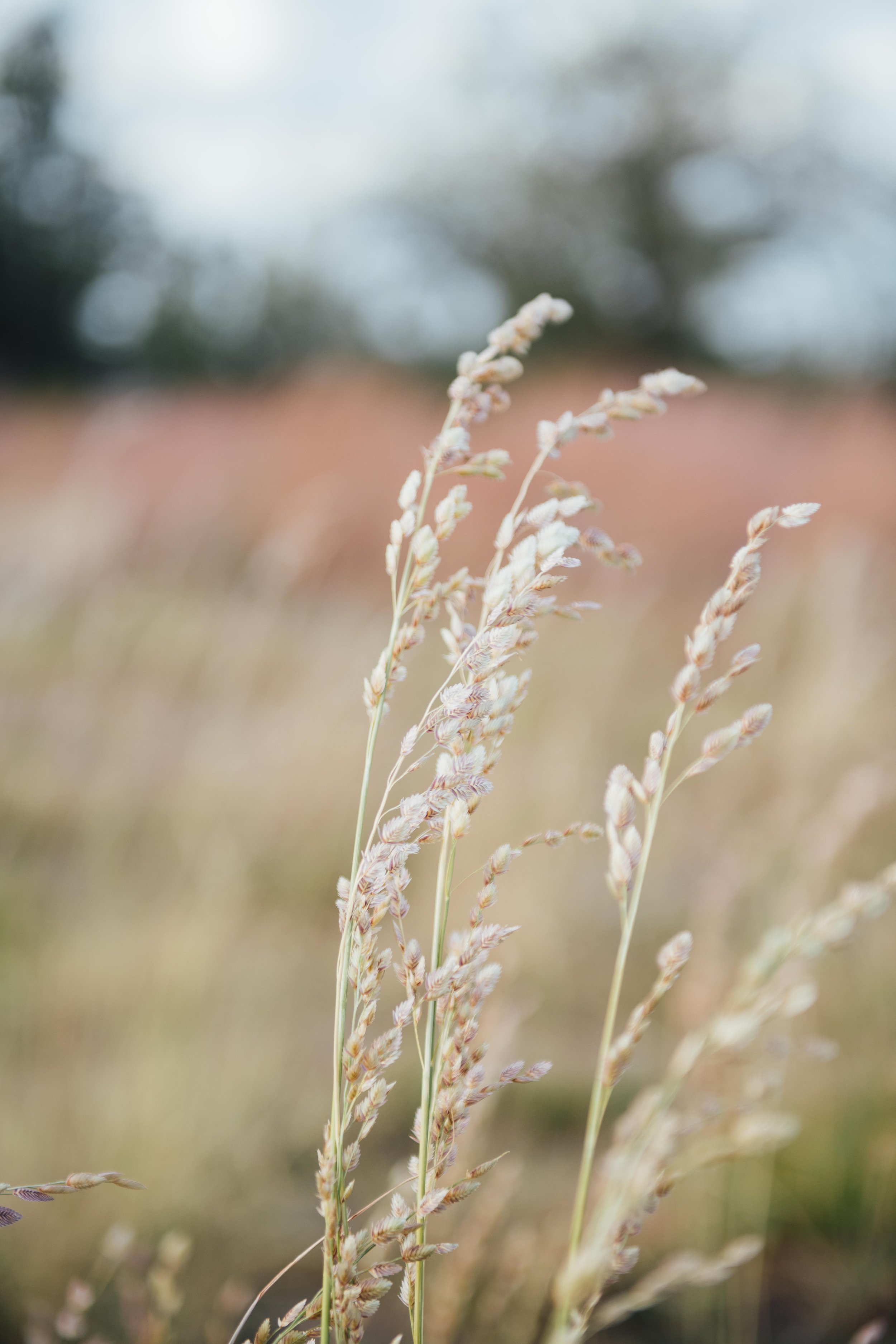Plants & Trees
Native Plants: What are they?
Native plants grow in the regions in which they evolved. Birds, insects, and other animals depend on these plants for food, habitat, and nesting material. In Central Texas, native species are adapted to extreme temperatures, droughts, and floods. Protection and promotion of native plants and trees is critical as urban sprawl and agricultural land use increases and as non-native, invasive species spread.
Highlights at the park include Texas bluebonnets, six species of milkweed, over two dozen native grasses, and clusters of woolly lipfern and Buckley’s yucca. Native trees include Ashe juniper, Texas live oak, post oak, cedar elm, mesquite, Eve’s necklace, and huisache.
Horseshoe Bay Nature Park is an active prairie restoration site and is home to hundreds of species of native grasses, trees, wildflowers, and other plants.
Orange Sulphur Butterfly and Indian Blanket - Photo by Katherine Daniels
AT THE PARK
Conservation and restoration projects that support native plants include:
Restoration of a native mixed-grass prairie preserves an ecosystem in steep decline.
Contour swales manage rainwater and nurture healthy topsoil and diverse plant life.
Invasive species are managed to allow native species to thrive.
Managed, seasonal seeding and mowing maintain healthy prairie plant communities.
-
Download a list of observed plants and trees
-
Visit us on iNaturalist and add more plants to the list!
The park actively monitors and manages invasive plant species.
Invasive Plants: What are they?
The USDA defines invasive plants as non-native, aggressive plants that cause damage to native ecosystems. Lacking the natural competitors and diseases that would normally regulate their population, they grow and spread rapidly, threatening native ecosystems.
Wilman Lovegrass by BorjaVisuals
Some of the invasive species found in the park include:
Beggar’s Ticks
Dodder
Field Brome / Japanese Brome
Johnson Grass
King Ranch Bluestem
Malta Starthistle
Perennial Ryegrass
Sow Thistle
Vasey Grass
Wilman Lovegrass

















